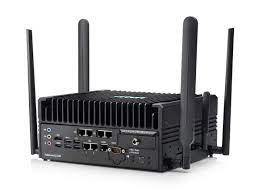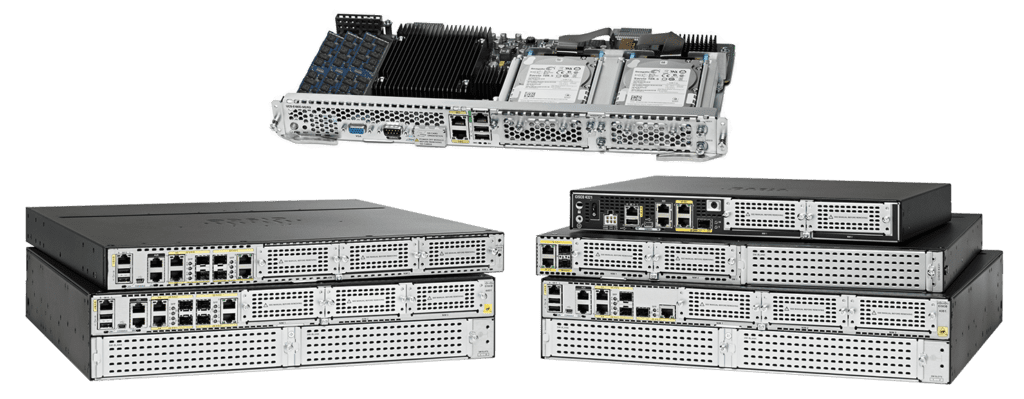Edge computing networks prioritize distributed infrastructure and micro data centers that bring processing and storage of digital resources to global end-users. But how should organizations at large approach edge network deployment?

While the last decade has seen the widespread adoption of cloud computing — which relies on centrally hosted and managed data centers — edge computing provides enterprise organizations with the methods needed to keep pace with data speeds and serve a global audience. With clients and end users top of mind, edge networks help reduce latency, speed delivery of resources, and improve the customer experience.
This article looks at what to consider when adding edge network infrastructure, edge computing hardware traits, what edge solutions offer, and the top edge service vendors.
How to Build an Edge Computing Network
Comprehensive edge computing networks require a long-term strategy with adequate resources, partners, and implementation. With a proper inventory of distributed network infrastructure, organizations can evaluate target locations for potential edge networks, find the appropriate hardware and software needs, and continually develop their newest network segment.
1. Evaluate Edge Needs, Resources, and Objectives
Organizations interested in deploying edge computing networks must first know their intended audience, which is existing or potential clients benefiting from the additional infrastructure. Knowledge of customer requirements like global geographic locations, concentrated service regions, or content delivery speeds can help drive decision-making around an edge investment.
Establishing an inventory of existing data centers and distributed network infrastructure — including IoT devices and sensors — is essential to developing new edge networks. The next step is finding edge computing solutions that are flexible enough to integrate with legacy systems and the latest products.
Read more: Edge Cache: What Is Edge Caching? How Does it Work?
2. Select and Deploy Edge Computing Solutions
Edge computing companies are the vendors offering organizations the hardware, networking machinery, processors, colocation data center contracts, and innovative edge technologies needed to establish an edge network.
Enterprise organizations with existing global infrastructure and networks will have a far easier time adding edge devices and transforming legacy networks to serve physically close end users.
Alternatively, startups and smaller companies will need to obtain the required infrastructure and solutions provided by edge computing providers to create edge networks. Because of the sensitive nature of uptime and reliable service, organizations must conduct due diligence in selecting adequate solutions.
3. Maintain, Secure, and Optimize Edge Infrastructure
Once established, edge computing networks require ongoing maintenance and performance tuning like any other IT network. Administrators can dive into edge-specific traffic, evaluate potential problems, and remediate as needed to optimize the distributed network.
Organizations adopting additional edge networks isolated by long geographic distances must develop a strategy that accounts for and centrally maintains an array of remote networks.
Read more: Best Server Security Services for 2022
What Is Edge Computing Hardware?
Edge computing hardware is the servers and machines that connect and manage edge networks. Designed to collect, store, process, and analyze data at the edge, these sturdy computers need to handle a range of external environments. They must also provide ongoing performance and connect to existing network systems.

Functionality and Performance
Edge hardware, like other network infrastructure, plays a specific function. For distributed networks, edge computers need advanced I/O ports for connecting new and legacy machines, the latest security to guard against cryptographic threats, and sufficient storage with SSDs or HDDs.
Edge hardware should offer both socket-based industrial computers and SoC options like GPUs and CPUs for performance requirements. Organizations must choose wisely, as processors impact the speed and quantity of workloads completed for an edge network. Performance accelerators, including multi-core CPUs, VPUs, and NVMe computational storage, are essential add-ons for further optimizing edge hardware performance.
Built for Any Environment
Unlike traditional data centers, edge networks can take on several setups, and their remote nature can mean exposure to the elements. Edge hardware devices are compact and reliable computers built to manage extreme temperatures, various power range options, and exposure to weather-induced disruptions.
Other environmental factors for consideration include the physical size of the edge network, pollutants, and exposure to electromagnetic waves or shocks.

Read more: On-Premises Infrastructure is Here to Stay. Which Workloads Go Where?
Examples of Edge Computing Solutions
Remote Monitoring and Maintenance
An influx of industrial IoT (IIoT) devices and enterprise sensors gives organizations a new level of visibility and control over remote systems. These highly connected devices can help organizations make the most of remote network infrastructure and secure off-site data.
For industries like healthcare and supply chain logistics, edge networks give administrators real-time insight into the health of globally distributed systems.
Smart Energy Grids
Smart grids are electricity networks providing organizations with a two-way flow of traffic and enabling intelligent power distribution management. Smart energy grids are responsive to usage changes of grid users like end users, energy generators, and storage owners, providing added load balancing.
Edge computing solutions give organizations a new level of control over power distribution by establishing intermediary power networks offering enhanced storage of energy and resource allocation. As an increasing number of sensors track critical performance metrics, edge products ensure power operators optimize services to stakeholders.

Read more: Best Server Virtualization Software for 2022
Autonomous Vehicles and Transportation
Self-driving cars require real-time data processing for location, speed, direction, and more. Features like self-parking and lane-departure alerts are just two notable examples of vehicle sensors processing local data and responding instantaneously.
As more autonomous vehicles hit the road, existing CCTV cameras capturing traffic conditions and GPS data will help inform millions of cars processing edge transactions.
Public and commercial transportation are both prime targets for edge transformations as well. Autonomous commercial trucks are already forging cross-country trips, while intelligent cities adapt edge networks to optimize traffic and public transport systems like buses and subways.
Virtualized RAN (vRAN) and 5G
At the heart of 5G deployment is network functions virtualization (NFV), enabling the multiplexing of virtualized and independent logical segments for a physical, on-premises network.
Similarly, an essential capability within edge computing’s development is virtualized radio access networks (vRAN). In line with efforts to establish software-defined and virtualized networks, vRANs provide telecommunications service providers with greater flexibility, operational efficiency, and 5G-readiness.
Read more on eSecurity Planet: Cybersecurity Risk of 5G – And How to Control Them
Partnering with Edge Computing Companies
Building an edge network is no small endeavor, often requiring obtaining products or services from a multitude of edge computing companies that offer cloud services, telecommunications, edge hardware, and more.
Examples of Edge Computing Vendors
Public Cloud Computing
- Amazon Web Services
- Google Cloud
- IBM Cloud
- Microsoft Azure
- Rackspace
Content Delivery Networks
- Akamai
- Cloudflare
- Fastly
- Imperva
- KeyCDN
Edge Computing Hardware
- ADLINK Technology
- Arista Networks
- Cisco
- Dell EMC
- HP Enterprise
Considerations for Edge Computing Solutions
Adding edge networks to organization infrastructure takes a concerted strategy considering business objectives, performance and capacity requirements, physical location variables, security, and more. When evaluating the top edge computing solutions, buying managers should keep the following questions in mind.
- What objectives are met by the purchase of this edge solution?
- Does the solution meet the organization’s budget and technical requirements?
- How do vendor solutions approach compliance and regulatory requirements?
- What embedded functionality and tools come with solutions?
- Is the solution flexible enough to integrate with legacy and possible future systems?
- Does the solution outperform existing solutions in connectivity and responsiveness?
- What are the terms of service and level of ongoing support and maintenance?
- Does the vendor offer managed or hosted edge computing services?
As organizations prepare for the next generation of delivering services to clients and end users, edge computing solution purchases can be the difference in building robust and flexible edge networks.
Read more: Top Rack Servers of 2021

